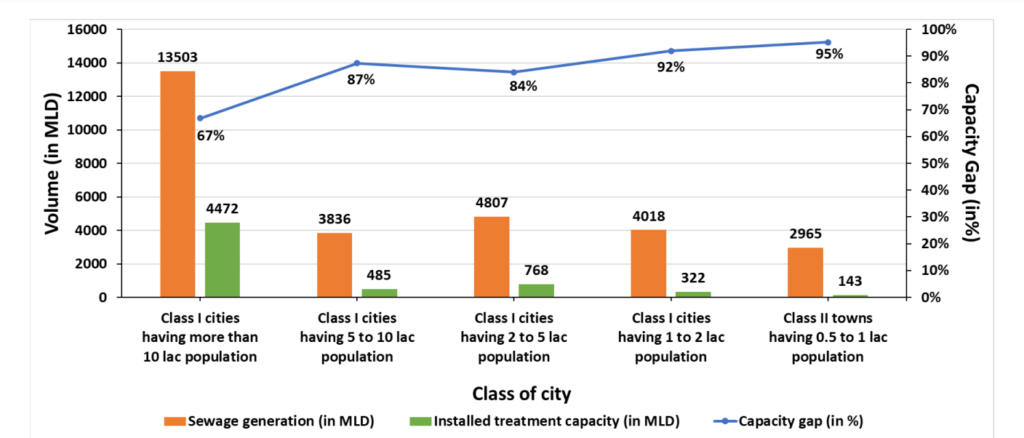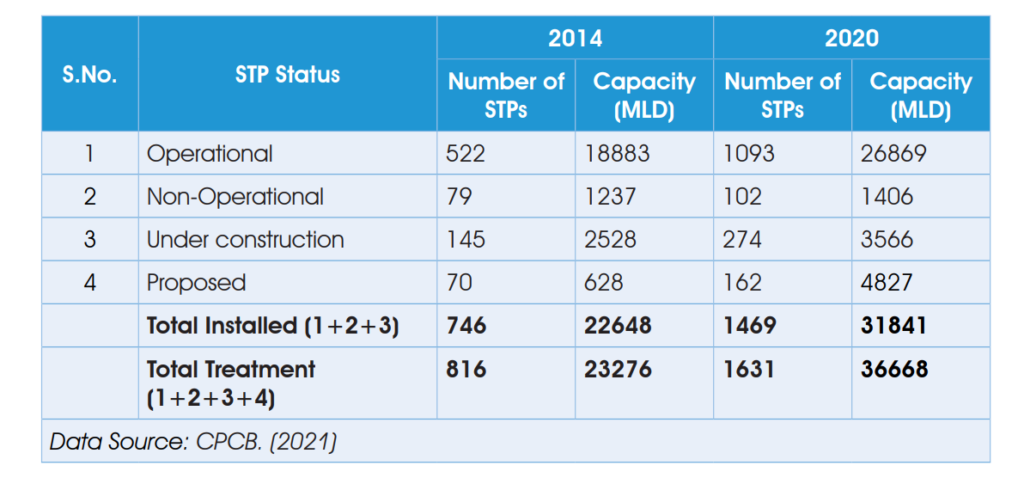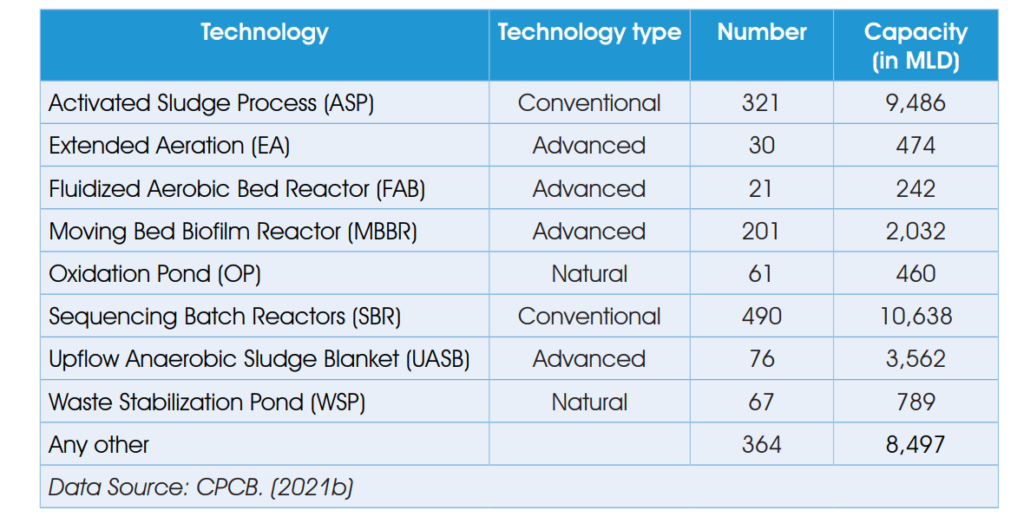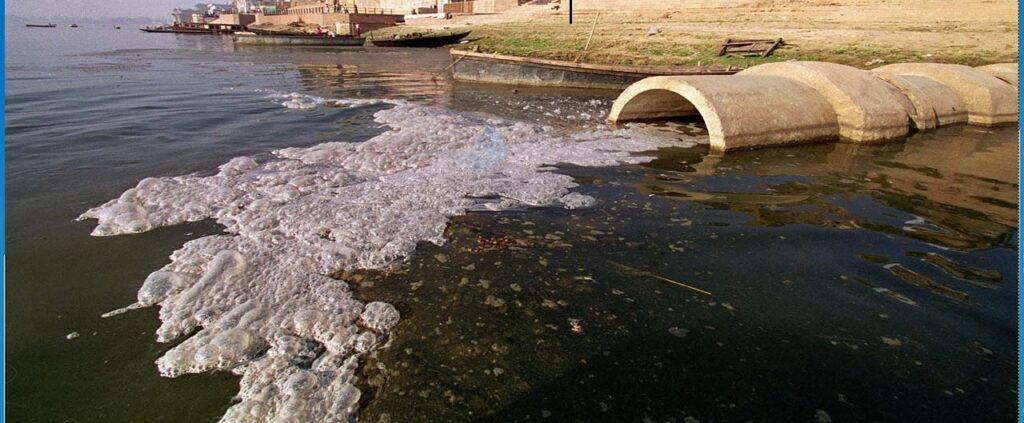Urban Wastewater Management in India: Challenges and Collaborative Solutions
India, a land of vibrant cities and rapid urbanization, faces a critical juncture in its developmental narrative. As economic reforms, population dynamics, and urban growth intersect, one pivotal issue emerges: the management of urban wastewater. This multifaceted challenge has far-reaching implications for public health, environmental sustainability, and socio-economic progress. In this comprehensive exploration, we delve into the complexities of India’s urban wastewater crisis, unpacking the challenges, exploring potential solutions, and advocating for collaborative endeavors to address this pressing issue.
Challenges of Urban Wastewater Management
Sewage Generation and Infrastructure Strain
The rapid pace of urbanization in India has led to a significant increase in sewage generation. According to recent estimates by the Central Pollution Control Board (CPCB), urban centers in India generate a staggering 72,368 Million Liters per Day (MLD) of sewage. However, the operational capacity of sewage treatment plants (STPs) falls far short of this demand, with only 26,869 MLD of wastewater being treated. This glaring deficit results in approximately 72% of urban wastewater remaining untreated, posing grave environmental and public health risks.The rapid pace of urbanization in India has led to a significant increase in sewage generation. According to recent estimates by the Central Pollution Control Board (CPCB), urban centers in India generate a staggering 72,368 Million Liters per Day (MLD) of sewage. However, the operational capacity of sewage treatment plants (STPs) falls far short of this demand, with only 26,869 MLD of wastewater being treated. This glaring deficit results in approximately 72% of urban wastewater remaining untreated, posing grave environmental and public health risks.

Wastewater generation and treatment capacity gap at city level in India (CPCB, 2022)
Consequences of Inadequate Wastewater Management
- Water Contamination: When untreated sewage is discharged into rivers, lakes, and groundwater sources, it wreaks havoc on our environment. Let’s explore the dire consequences:
- Aquatic Ecosystems Under Siege:
- Sewage introduces harmful substances like nitrogen, phosphorus, and organic matter into water bodies.
- These nutrients trigger excessive algal growth, leading to algal blooms. Algae consume oxygen during decomposition, suffocating aquatic life.
- Fish, amphibians, and other organisms struggle to survive in oxygen-depleted waters.
- Disruption of Natural Habitats:
- Sewage alters the physical and chemical properties of water, affecting the entire ecosystem.
- Riparian zones (the interface between land and water) suffer. Vegetation and wildlife that rely on these zones face habitat loss.
- Wetlands, crucial for water purification and biodiversity, become overwhelmed by pollutants.
- Compromised Water Quality:
- Pathogens (bacteria, viruses, parasites) from sewage contaminate water, posing health risks to humans and animals.
- Chemical pollutants (heavy metals, pharmaceuticals, pesticides) persist in water, affecting not only aquatic life but also those who depend on these water sources. Ecosystem Degradation: The impact extends beyond water bodies. Ecosystems suffer as pollutants alter nutrient cycles, disrupt food chains, and harm biodiversity. Wetlands, once natural purifiers, are now overwhelmed by untreated wastewater.
- Aquatic Ecosystems Under Siege:
- Health Risks: The consequences of water pollution extend beyond environmental degradation; they directly impact human health. Let’s delve into the specific risks:
- Biochemical Oxygen Demand (BOD):
- Elevated BOD levels indicate organic pollution in water.
- When bacteria break down organic matter, they consume oxygen.
- Reduced oxygen levels harm aquatic life and can lead to fish kills.
- For humans, exposure to BOD-contaminated water can cause skin irritation and gastrointestinal issues.
- Chemical Oxygen Demand (COD):
- COD measures the amount of oxygen needed to oxidize organic and inorganic substances in water.
- High COD levels indicate pollution from industrial discharges, pesticides, and other chemicals.
- Ingesting water with elevated COD can lead to nausea, vomiting, and abdominal pain.
- Heavy Metals:
- Metals like lead, mercury, and cadmium contaminate water due to industrial processes and mining.
- Chronic exposure to heavy metals damages organs (e.g., kidneys, liver, nervous system).
- Lead, especially harmful to children, affects cognitive development and causes anemia.
- Hazardous Chemicals:
- Pesticides, industrial solvents, and pharmaceutical residues infiltrate water sources.
- These chemicals pose carcinogenic risks, affecting long-term health.
- Communities near contaminated water sources face increased cancer rates and other health complications.
- Waterborne Diseases:
- Pathogens thrive in polluted water. Bacteria (e.g., E. coli), viruses (e.g., hepatitis A), and parasites (e.g., Giardia) cause waterborne diseases.
- Diarrhea, cholera, dysentery, and typhoid spread through contaminated water.
- Vulnerable populations, including children and the elderly, suffer the most.
- Biochemical Oxygen Demand (BOD):
- Water Scarcity: India grapples with a precarious balance between water availability and demand. As urbanization surges, freshwater resources deplete rapidly. But the crisis extends beyond scarcity. Let’s explore:
- Resource Depletion:
- Urbanization strains existing water sources—rivers, lakes, and aquifers.
- Over-extraction for agriculture, industry, and domestic use exacerbates scarcity.
- As untreated wastewater infiltrates available water, the cycle of resource degradation intensifies.
- Environmental Stress:
- Polluted water bodies harm ecosystems, affecting flora, fauna, and biodiversity.
- Altered hydrological cycles disrupt natural processes, perpetuating stress.
- Climate change-induced weather events exacerbate the situation.
- Resource Depletion:
Solutions and Collaborative Opportunities
Infrastructure Development
Investing in wastewater treatment infrastructure is paramount to address India’s urban wastewater crisis. Bridging the gap between sewage generation and treatment capacity necessitates strategic actions:
- Expansion and Modernization of Sewage Treatment Plants (STPs):
- Upgrading Existing STPs: Revamping outdated facilities with advanced technologies improves efficiency and capacity.
- Constructing New STPs: Building additional treatment plants ensures comprehensive coverage and effective wastewater management.
- Upgrading Existing STPs: Revamping outdated facilities with advanced technologies improves efficiency and capacity.
- Constructing New STPs: Building additional treatment plants ensures comprehensive coverage and effective wastewater management.
- Decentralized Systems:
- Implementing decentralized wastewater treatment systems at local levels enhances resilience and reduces strain on centralized infrastructure.
- Community-based solutions, such as constructed wetlands and decentralized STPs, contribute to sustainable management.

Comparative STP status with respect to number and capacity for years 2014 and 2020. Data Source: CPCB. (2021)
Technological Innovation
- Advanced Treatment Technologies:
- Membrane Bioreactors (MBRs): These combine biological treatment with membrane filtration, producing high-quality effluent.
- Reverse Osmosis (RO): RO systems remove dissolved salts and impurities, ensuring safe water for various applications.
- Ultraviolet (UV) Disinfection Systems: UV light destroys pathogens, making treated water safer for reuse.
- Nature-Based Approaches:
- Constructed Wetlands: These mimic natural wetlands and use plants and microbes to purify wastewater. They provide habitat restoration and enhance water quality.
- Green Infrastructure: Integrating green spaces, rain gardens, and permeable surfaces can complement conventional treatment methods. It promotes ecological restoration and reduces runoff.

Technological distribution with respect to number and the capacity on installed STP capacity. Data Source: CPCB. (2021b)
Collaboration and Partnerships
- International Collaboration:
- India can leverage partnerships with international organizations, academic institutions, and technology providers. Collaborating with countries experienced in wastewater management facilitates technology transfer, capacity building, and knowledge exchange.
- Public-Private Partnerships (PPPs):
- PPPs offer a viable model for mobilizing resources and expertise. By engaging with private sector entities, governments can leverage investment, innovation, and efficiency.
- PPPs foster innovation in service delivery and ensure the sustainability of wastewater management initiatives.
Conclusion
The urban wastewater crisis in India demands collective action. By investing wisely, embracing innovation, and fostering collaboration, we can safeguard water resources, protect public health, and promote sustainable development. Let us work together to create a cleaner, healthier environment for generations to come.
DATA AND IMAGE SOURCE : URBAN WASTEWATER SCENARIO IN INDIA, NITI AYOG. YEAR 2022


Pingback: Effluent Recycling & Zero Liquid Discharge
Pingback: Combatting Pollutants: Advanced Water Treatment Solutions
Pingback: The Hidden Costs of Water Mismanagement: Why Every Drop Really Matters - Genviss : Engineering Sustainable Solutions for Water, Energy, and the Environment